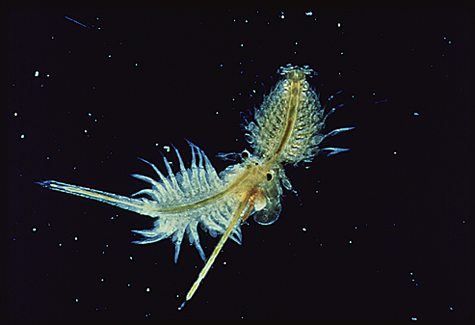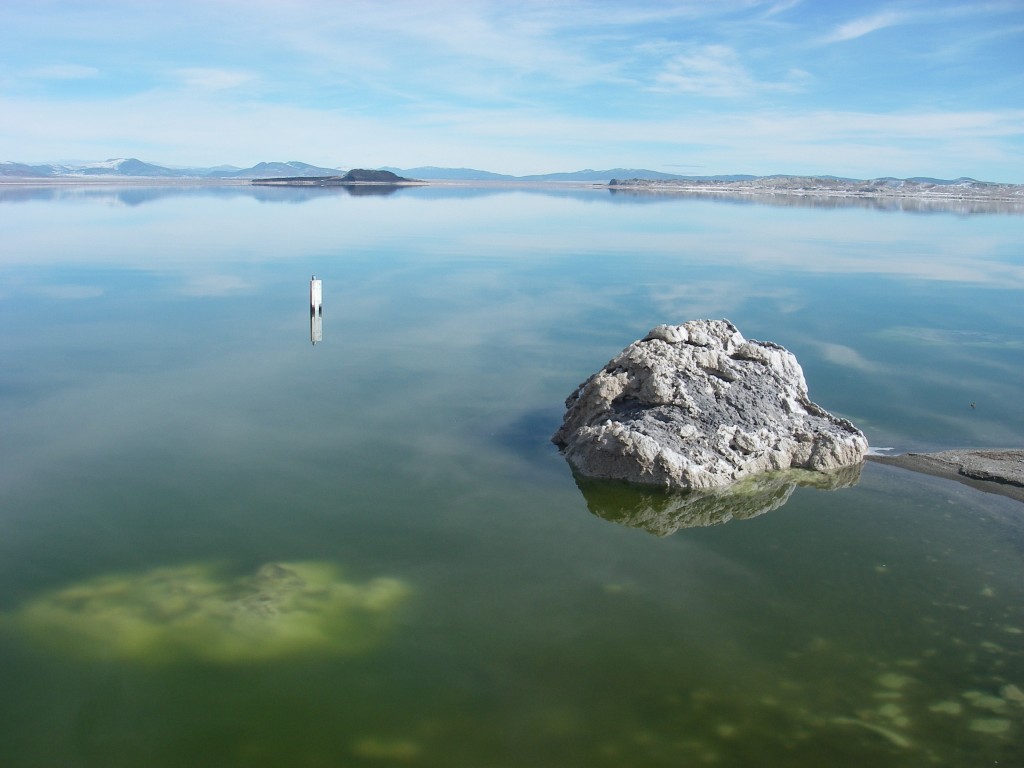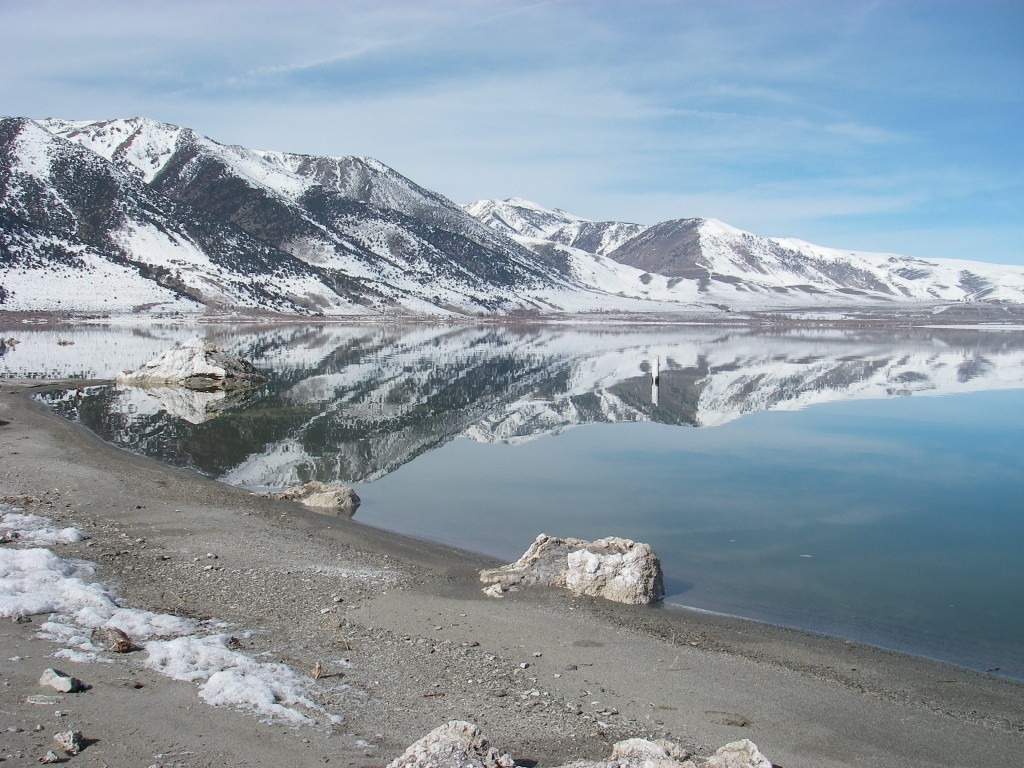
This post was written by Morgan, 2011 Project Specialist.

A few days ago I cross-country skied out to the shoreline to measure Mono Lake’s exact height above sea level, now 6381.99 feet. I knelt down at the water’s edge to admire the still green water, and could hardly believe my eyes. First one tiny hatchling, then another, then five more full-size brine shrimp sculling in circles on their backs—I counted over twenty in all.
While you can usually find one or two hardy alkali flies buzzing around the lake shore on sunny winter days, it is very rare to spy a lone surviving brine shrimp during the cold winter months from December through March.
An early brine shrimp hatch is usually associated with warm lake water temperatures, but lately Mono Lake has been near freezing with ice skims along the northwest shore. In asking around, no one seems to remember ever seeing brine shrimp in the lake this early in the year. In a funny coincidence, staff noticed the first brine shrimp swimming in our office aquarium since late fall last week. Who knows if this means an early hatch for brine shrimp this spring, or if the few cold-water tolerant shrimp I saw won’t survive much longer.

Last week was also fairly windy which can sometimes cause Mono Lake to form a seiche, or standing wave. You can see a fun animation of this fascinating phenomena at the Geosciences Research Division’s Earthguide at the Scripps Institution of Oceanography.

